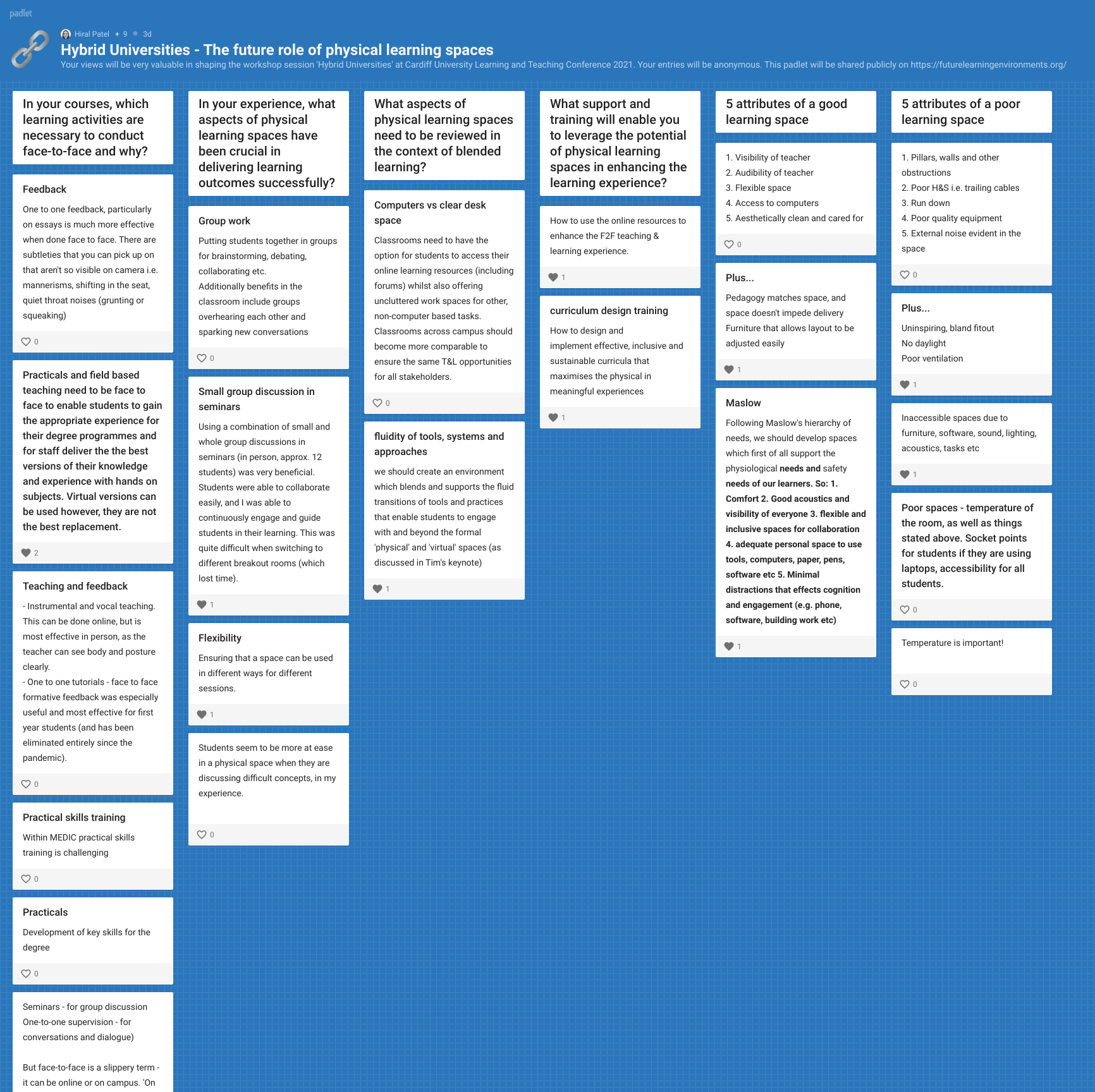Hybrid Universities: The future role of physical learning spaces
Event: CESI Learning and Teaching Conference 2021
Speaker: Dr Hiral Patel
Location: Virtual Event
Date: 2 July 2021
The session provided an opportunity to consider the role of physical spaces within digital education, the theme of the conference. The terms ‘blended’, ‘hybrid’ and ‘phygital’ have varied interpretations within different contexts. For this event, the term ‘hybrid’ was used as suggested in the book ‘Hybrid Environments for Universities‘:
"We define the term hybrid environment as an approach to merge physical and virtual spaces as well as to integrate formal and informal spaces in order to stress the need to overcome disciplinary and organizational boundaries. Space matters, but not just physical space. This perspective leads to new challenges.”
This view of hybrid environment not only bridges the physical and digital but also aims to overcome the long-standing gaps in how we characterise, design and manage physical learning spaces. The event focused on sharing the concept of ‘learning spaces as an ecosystem’ of physical and digital spaces. The physical spaces range from on-campus spaces, distributed local hubs (such as the SCONUL Access scheme) and spaces in the broader urban context of a university (such as pop-up science).
In preparation for the session, an exercise was set up to gather views of participants and the academic community more broadly on the future role of physical learning spaces.

The event participants reflected on the role of physical learning spaces, particularly when providing feedback, hands-on demonstrations/training and group work. One of the key attributes of a good learning space was noted as alignment between learning and space and the ‘Learning-space aligner’ tool was introduced.
Abraham Maslow’s hierarchy of needs was mentioned by one of the participants to structure attributes of a good learning space. Based on Maslow, Heather Cunningham and Susanne Tabur have created a framework that architects and academics can use when designing learning spaces. The framework has four layers: Access and linkages, uses and activities, sociability, and comfort and image.
The feedback from participants suggested developing the session content in a ‘flipped learning’ mode, which is an excellent idea. This would also contribute towards developing training resources for creating a meaningful learning experience, through aligning curriculum design with physical learning spaces.